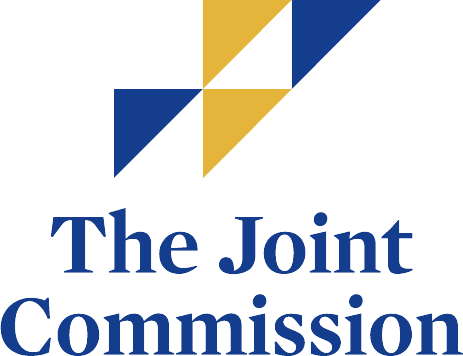For the past year and a half, people around the globe have been having a rough time. When the COVID-19 pandemic struck, everyone was scared for a whole range of reasons– health, job security, financial stability.

With the uncertainty the pandemic brought, everyone looked for different ways to cope. A fair few turned to positive outlets like working out, spending time with friends, and focusing on family. Unfortunately, others spiraled downward and turned to substance use and abuse.
Recently, medicine has played a massively important role in dealing with the impact of the pandemic. Aside from battling COVID-19 symptoms, people took medication to manage their mental issues. Unfortunately, some began mixing stimulants and depressants to help them get through the ordeal.
Stimulants vs. Depressants Compared
Stimulants Definition and Types
Also known as “uppers,” stimulants increase activity in the body. They speed up physical and mental processes, increasing dopamine levels in the brain and eliciting desirable short-term effects.
Doctors typically prescribe this group of drugs to treat disorders such as attention-deficit hyperactivity disorder (ADHD) and narcolepsy. While they offer good short-term effects, long-term abuse carries significant consequences.
Stimulants are among the most commonly abused drugs. “Uppers” give you euphoric and calming feelings, as well as elevate your mood with increased dopamine production. These effects are what turn-taking medication into substance abuse and addiction.
Types of Stimulants
There are many types of stimulants. Some are legal, and you can buy them in stores (caffeine and nicotine). Prescription stimulants are those only medical professionals can give out. On the flip side, a handful of stimulants the law bars some stimulants because of their intense effects and damage they can cause.
No matter which kind you take, there is always a certain risk for abuse and addiction. Listed below are some types of stimulants.
Prescription Stimulants
As said before, prescription stimulants treat narcolepsy and ADHD. However, those without the disorder frequently abuse these drugs to improve their focus and cognitive capabilities, specifically students.
A 2009 survey by the Centers for Disease Control and Prevention found that about 20% of students in high school admitted to taking an unprescribed prescription stimulant.
Even though teens and young adults often abuse prescription stimulants, addiction can continue for years. Students who depend on these drugs in school can turn into adults who use them to manage responsibilities.
Examples of prescription stimulants include:
- Adderall
- Concerta
- Dexedrine
- Ritalin
- Vyvanse

Cocaine
As a result of its euphoric impact, cocaine is possibly the most popular stimulant in the world. Usually injected, snorted, or rubbed on the gums, this white powder creates feelings of heightened excitement, euphoria, and an extreme increase in energy.
Despite the intense high, the effects of cocaine deplete rapidly, usually within an hour of taking it. As a result, users take more and frequently, leading to addiction.
Ecstasy
Scientifically known as 3, 4-methylenedioxy-methamphetamine (MDMA), ecstasy, or “molly,” is common in the club or party scene. Affecting many different neurotransmitters, this drug not only stimulates the brain but elicits hallucinogenic effects too. More than that, it increases sociability, making it a popular party drug.
MDMA is being studied for its potential to treat post-traumatic stress disorder. However, it’s currently an illicit C I class of controlled substance (Schedule I), meaning possession of it is illegal except with special permission from the government.
Methamphetamine
More commonly known as “meth,” methamphetamine is a lot like cocaine– it gives a rush of euphoria and is highly addictive. However, once the effects wear off and you “crash,” you may feel more negative emotions, such as anger and fear.
Steroids
Abuse of anabolic steroids is not common but also not unheard of. A synthetic form of testosterone, steroids can be addictive to its users, typically athletes or people, into physical fitness or bodybuilding. (3)
Abusing this drug long-term can lead to considerable medical concerns. These include:
- Increased risk to develop cancer
- Development of female secondary sexual characteristics in males (and vice versa)
- Problems with controlling emotions (anger outbursts and issues with aggression)
Depressants Definition and Types
As opposed to stimulants, which essentially give you energy, depressants slow down brain activity.
Although different depressants work in different ways, all target the central nervous system (CNS), reducing activity and lowering awareness in the brain. They influence the neurotransmitter gamma-aminobutyric acid (GABA) and cause side effects like relaxation, decreased inhibition, and drowsiness.
Because of their impact on the CNS, many depressant drugs effectively treat several conditions, such as stress, anxiety, panic attacks, insomnia, sleep disorders, and seizures.
Despite their positive effects in treating specific conditions, all depressants can become addictive, like stimulants. If people are not careful in using them, they may turn to substance abuse treatment therapy to recover. (4)
Types of Depressants
Generally, there are three major types of CNS depressants: sedatives, tranquilizers, and hypnotics. But in this article, we’ll go over more specific examples.
Alcohol
Because of its accessibility, alcohol is one of the most widely taken depressant substances globally. However, most don’t realize it’s a depressant due to the substance’s initial “positive” effects.
When you first start drinking, you may feel relaxed. But the more and quicker you drink, you begin to feel negative emotions.
Contrary to CNS depressants’ ideal purpose, alcohol increases stress and anxiety and triggers other negative emotions like depression and anger.
More than that, chronic drinking can lead to dependence and addiction. (4)
Opioids
Opioids can be likened to a double-edged sword– it’s one of the most effective treatments for pain and highly addictive.
If you take opioid medication as your physician directs, you’re less likely to develop an opioid use disorder or addiction. Unfortunately, others increase their intake and take it more frequently, developing a tolerance instead.
Once you’ve built up a high tolerance, a cycle of increasing intake begins, becoming an addiction. (5)
Barbiturates
Doctors prescribe barbiturates to treat tension, sleep disorders, and anxiety. Although previously considered a safe depressant, this type of depressant quickly became a problem drug when abuse, addiction, and overdose arose.
Even in small doses, barbiturates can create a sense of euphoria and relaxation. Consequently, this leads some users to abuse it. More than that, it resulted in suppressed REM sleep, a dramatic impact on sleep patterns. (4)
Benzodiazepines
As a response to the high abuse rates of barbiturates in the 1950s and 70s, medical professionals developed and popularized benzodiazepines (“benzos”). With their muscle-relaxing, sleep-inducing qualities, these drugs are highly effective in treating anxiety and insomnia. A less addictive alternative, these drugs are less likely to cause an overdose.
Yet, benzodiazepines still have the risk for addiction. While safe for short-term treatment, improper use can lead to tolerance development.

Sleeping Pills
Aside from benzos, non-benzodiazepines sleep aids (“z-drugs”) treat sleep disorders (i.e., insomnia).
Although they target the CNS and stimulate the GABA neurotransmitter, they do it differently: they don’t reduce anxiety.
Additionally, while they have fewer side effects and a lower risk of addiction than benzos, long-term use and abuse can lead to dependence and addiction. (4)
Consequences of Mixing Stimulants and Depressants
Now that we know the difference between depressant and stimulant drugs, here’s why you should not take them together.
Abusing one drug alone already carries its own dangers, but mixing stimulants and depressants at the same time elevates the danger of an overdose. Both drugs create opposite effects, and your body may act unpredictably, possibly negatively or fatally.
In an interview with scientists from the National Institute on Drug Abuse, they say that taking the two types of drugs make it more likely to have an overdose and potentially die.
They add that over-the-counter drugs are “a little bit scary” because it’s unlikely to realize there is a connection between them. So, dangerous situations don’t have to include illicit drugs like heroin. Problems may arise with simple medicine for colds and alcohol.
Other consequences of mixing stimulants and depressants
- Heart problems
- Cardiac arrest
- Coma
- Breathing problems/respiratory failure
- Seizures
- Brain damage
- Heatstroke
- Stomach bleeding
Treating Substance Use Disorders
Because of their opposing effects on the body, mixing stimulants and depressants is not only risky but dangerous. Stimulants speed up body and brain activity while depressants slow them down. Taking them together can have an adverse effect on the body.
Even taking one drug has the potential of addiction. Fortunately, you can treat substance use disorders. From medical detox to group therapy, anyone can begin their journey on recovery.
If you’re looking for a place to heal from a stimulant or depressant use disorder, turn to Buena Vista Health and Recovery Center. Fully equipped, our team of professionals provides addiction help to anyone struggling with a substance use disorder. Along with a variety of treatment programs, we can help you get your life back.
You can contact us at (800) 922-0095, or go to any of our locations:
CAVE CREEK
(623) 323-1970
29858 N. Tatum Blvd.
Cave Creek, AZ 85331
CHANDLER
(480) 680-0606
3033 South Arizona Avenue
Chandler, Arizona 85248
TUCSON
(520) 436-7860
5151 East Pima Road
Tucson, Arizona 85712
SCOTTSDALE
(623) 323-7986
8171 E Indian Bend Rd
Scottsdale, AZ 85250




